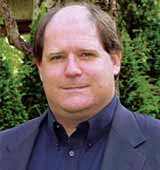|
Executive Interviews: Interview with Philip Anderson on Corporate Entrepreneurship
April 2007
-
By Dr. Nagendra V Chowdary
 Philip Anderson
Philip Anderson INSEAD Alumni Fund Professor of Entrepreneurship at INSEAD, in Singapore. He is also director of the 3i Venture lab. 
Must we accept the logic of
journalist Malcolm Gladwell, who,
essaying Enrons demise, asked
rhetorically in The New Yorker
magazine, What if Enron failed not in
spite of its talent mind-set but because
of it? What if smart people are
overrated? Do we need to reverse our
thinking on the benefits of corporate
entrepreneurship?
Enron deserves kudos for coming up
with some innovative new business
ideas and forming organizational
structures designed from the start to
suit them. Enron failed in part
because of its incentives, and in part
because of its culture. Arrogance was
certainly part of that.If there is a
lesson to be learned, it is that you
dont need the worlds
|
|
smartest person to launch a corporate venture.
You need a general manager who has
a track record of building new
organizations. Many a time, very high potential
ventures fail to take off for want of
funding. How to plan for new venture
funding?
Entrepreneurs in modern India tell me
this is one of the least of their worries.
India is awash with money to back
good venture ideas. The key is to find
investors who bring more than money
to the table and whose interests are
aligned with yours. The most
common mistake I have seen in India
occurs when an entrepreneur takes
money to get a venture off the ground
only to find out that the investor has a
much shorter term horizon and wants
very quick exit at a high multiple. If
thats not the kind of company you are
building, thats not the kind of
investor you should have on board. What are the challenges facing
implementation of effective and exemplary
corporate entrepreneurship
programs?
There is a bit of a chicken and egg
problem. Because most seldom start
new business units, they dont have a
talent pool of people who have
experience in building a new
organization. One way around that is
to plan the career path of some
promising executives so they get that
experience, for example, by opening
a new office abroad. Another is to
cultivate a talent pool outside the
company (e.g. among vendors or
third parties who work with your
firm) of people who can be hired and
start contributing immediately when
you form a new business unit. How should companies go about
fostering an entrepreneurial
culture with commercially engaging
potential?
Most corporations have highly
developed mechanisms for killing
ideas by proving that they cannot
work. Most ventures seem unsound
at the outset; there arent enough
PowerPoint slides in the world to
demonstrate by logic alone that a
risky idea will pay off. Develop
simple, low cost mechanisms for
trying out new ideas in the
marketplace (perhaps with or
through third parties), so that the
voice of the market can tell you
whether or not they have promise. If
the only way to fund the trial of an
idea is through a political/persuasion
process, you will never have enough
entrepreneurship inside your
company. Provide innovators with
simple, fast, cheap ways to give an
idea a go. What is the role of leadership / top
management in creating businesses
within a business?
Leaders create a climate within
which people search for new
opportunities, usually because the
companys ambitions exceed what is
possible simply by growing todays
businesses. They cultivate the kind
of talent needed to seed a new line of
business far in advance of when they
actually need it. They motivate
people to try great things and convey
trust that failures will not be
punished too severely as long as the
problem wasnt poor execution.
Leaders protect and nurture fledgling
new lines of business, understanding
that internal rivalry and jealousy are
natural and kill a lot of promising
growth opportunities.
1.
Leadership and Entrepreneurship Case Studies
2. ICMR
Case Collection
3.
Case Study Volumes
|
The Interview was conducted by Dr. Nagendra V Chowdary, Consulting Editor, Effective
Executive and Dean, IBSCDC, Hyderabad. This Interview was originally published in Effective Executive, IUP, April 2007. Copyright © April 2007, IBSCDC
No part of this publication may be copied, reproduced or distributed, stored in a retrieval
system, used in a spreadsheet, or transmitted in any form or medium electronic,
mechanical, photocopying, recording, or otherwise without the permission of IBSCDC. |
